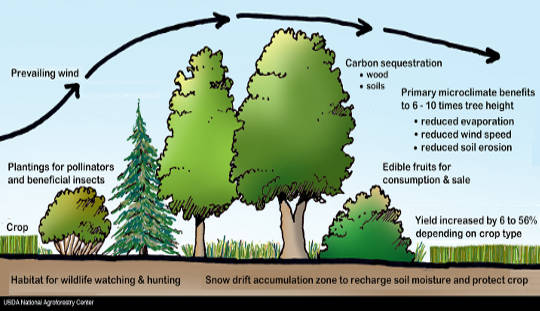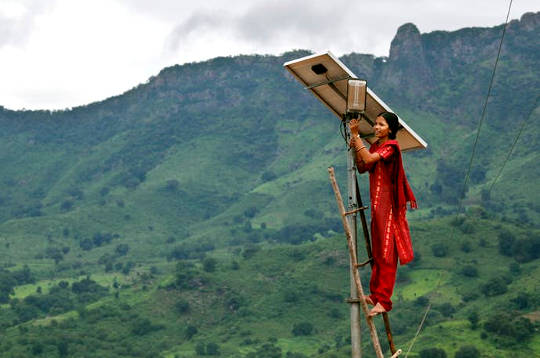
Megacities are on the rise. There are currently 47 such areas around the globe, each housing more than 10 million residents.

Transforming U.S. energy systems away from coal and toward clean renewable energy was once a vision touted mainly by environmentalists.

In 2016, more renewable energy was added to the global grid than ever before, and at a lower cost. A global energy revolution is clearly underway. What catalysed this transformation?

If recent trends continue for another two years, the global share of electricity from renewables excluding hydropower will overtake nuclear for the first time.

Imagine then an enlightened “quantitative easing” transferring resources not to banks, but to mobilise a rapid transformation in energy infrastructure, retrofitting existing buildings, decarbonising transport and constructing zero-carbon power stations.
 In the 2015 Paris Agreement on climate change, nearly every country on Earth pledged to keeping global temperatures “well below” 2C above pre-industrial levels and to “pursue efforts to limit the temperature increase even further to 1.5C”.
In the 2015 Paris Agreement on climate change, nearly every country on Earth pledged to keeping global temperatures “well below” 2C above pre-industrial levels and to “pursue efforts to limit the temperature increase even further to 1.5C”.

Agroforestry could play an important role in mitigating climate change because it sequesters more atmospheric carbon in plant parts and soil than conventional farming, report researchers.
 Imagine a world where every country has not only complied with the Paris climate agreement but has moved away from fossil fuels entirely. How would such a change affect global politics?
Imagine a world where every country has not only complied with the Paris climate agreement but has moved away from fossil fuels entirely. How would such a change affect global politics?

For the first time, the European Union generated more electricity from wind, solar and biomass than from coal in 2017, according to new analysis from two thinktanks.

Forest owners at greater risk of illegally cutting trees on their land prefer to join conservation programs that allow sustainable timber harvesting, a new study suggests.
 In tumultuous times, art can and must express the turmoil and help us process what’s going on.
In tumultuous times, art can and must express the turmoil and help us process what’s going on.
 Many cities which endure cold winters are adapting district heating schemes to keep people warm without the use of fossil fuels.
Many cities which endure cold winters are adapting district heating schemes to keep people warm without the use of fossil fuels.

Planting more urban forests is a simple way not only to improve the health of a city’s people, but to make them wealthier too.
 The need to cut emissions from the energy sector has motivated the use of hydro, solar and wind power, and the development of more efficient buildings that consume less energy.
The need to cut emissions from the energy sector has motivated the use of hydro, solar and wind power, and the development of more efficient buildings that consume less energy.
 A new water-based air-conditioning system cools air to as low as 18 degrees Celsius (about 64 degrees Fahrenheit) without using energy-intensive compressors and environmentally harmful chemical refrigerants.
A new water-based air-conditioning system cools air to as low as 18 degrees Celsius (about 64 degrees Fahrenheit) without using energy-intensive compressors and environmentally harmful chemical refrigerants.
 Recently, National Geographic published an article called “This Tiny Country Feeds the World,” where the author extolled the innovations of a small European country that has managed to become a global powerhouse in agriculture and technology—the Netherlands.
Recently, National Geographic published an article called “This Tiny Country Feeds the World,” where the author extolled the innovations of a small European country that has managed to become a global powerhouse in agriculture and technology—the Netherlands.

A program of one of the five largest supermarket chains in South Africa, drove increased adoption of environmental practices at the farm level, a new study of the store’s supply chain indicates.
 Last night I cooked my family a delicious pasta dinner using biogas energy. This morning we all had eggs cooked on biogas. I’m not sure what’s for dinner tonight, but I know what will provide the energy for cooking
Last night I cooked my family a delicious pasta dinner using biogas energy. This morning we all had eggs cooked on biogas. I’m not sure what’s for dinner tonight, but I know what will provide the energy for cooking
 Climate change will not affect every place equally. Here’s what seven regions in the bull’s eye are doing about it now.
Climate change will not affect every place equally. Here’s what seven regions in the bull’s eye are doing about it now.
 On June 3 2017, two days after President Trump announced that the United States would withdraw from the Paris climate accord, Indian Prime Minister Narendra Modi exchanged a hug with French President Emmanuel Macron during an official visit to Paris.
On June 3 2017, two days after President Trump announced that the United States would withdraw from the Paris climate accord, Indian Prime Minister Narendra Modi exchanged a hug with French President Emmanuel Macron during an official visit to Paris.
Under the 2015 Paris Agreement, nations pledged to keep the average global temperature rise to below 2C above pre-industrial levels and to take efforts to narrow that increase to 1.5C.
 The latest UN Climate Change Conference since the 2015 Paris Agreement is taking place in Bonn between November 6-17 – and the world will be watching.
The latest UN Climate Change Conference since the 2015 Paris Agreement is taking place in Bonn between November 6-17 – and the world will be watching.
 Robert Jay Lifton was born 91 years ago. Living through the catastrophes of the 20th century — world war, tyrannical regimes, genocide, the nuclear bomb, terrorism — he grappled with their terrible impact on human beings. His work as a psychiatrist, historian and public intellectual forged his reputation as one of the world’s foremost thinkers.
Robert Jay Lifton was born 91 years ago. Living through the catastrophes of the 20th century — world war, tyrannical regimes, genocide, the nuclear bomb, terrorism — he grappled with their terrible impact on human beings. His work as a psychiatrist, historian and public intellectual forged his reputation as one of the world’s foremost thinkers.

















